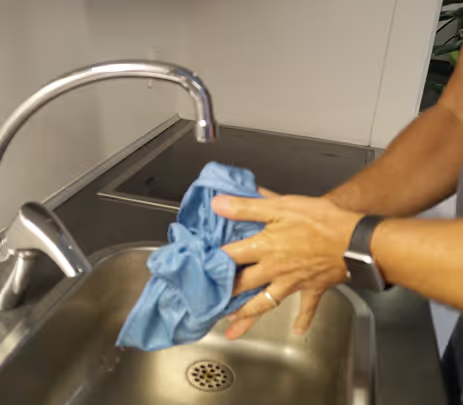Enveloped and non-enveloped virus survival on microfiber towels

Background
Handwashing is an important intervention which can reduce indirect disease transmission, however soap and water for handwashing purposes is not available in some low-resource regions. When handwashing with soap and water is not possible, individuals may use alternatives such as the Supertowel (a microfiber towel with an antimicrobial coating). Testing of viral inactivation as a result of antimicrobial treatment on the Supertowel, however, has been limited. The goal of this study is to provide information about the performance of the Supertowel’s antimicrobial treatment against viruses, which will help inform the use of the towels as handwashing alternatives.
Methods
We seeded the Supertowel and a regular microfiber towel with two bacte-riophages (enveloped Phi6 and non-enveloped MS2) and monitored viral inactivation over time. Additionally, we assessed if temperature, humidity, whether the towel was initially wet or dry, or virus type had an effect on viral decay rate constants. Virus concentrations were measured repeatedly over 24 h.
Results
We found that neither towel type (whether the towel was a Supertowel or a regular microfiber towel) nor humidity were significant variables in our model of decay rate constants (P = 0.06 and P = 0.22, respectively). We found that the variables of temperature, whether towels were initially wet versus dry, and virus type were significantly different from 0, suggesting that these variables explained variance in the decay rate constant (P = 6.55 × 10−13, P = 0.001, and P <; 2 × 10−16, respectively). Higher temperatures, dry towels, and enveloped viruses all resulted in increases in the decay rate constant.
Conclusions
Viruses seeded onto a Supertowel decay similar to viruses seeded onto a regular towel indicating that the virucidal potential of the Supertowel is minimal.